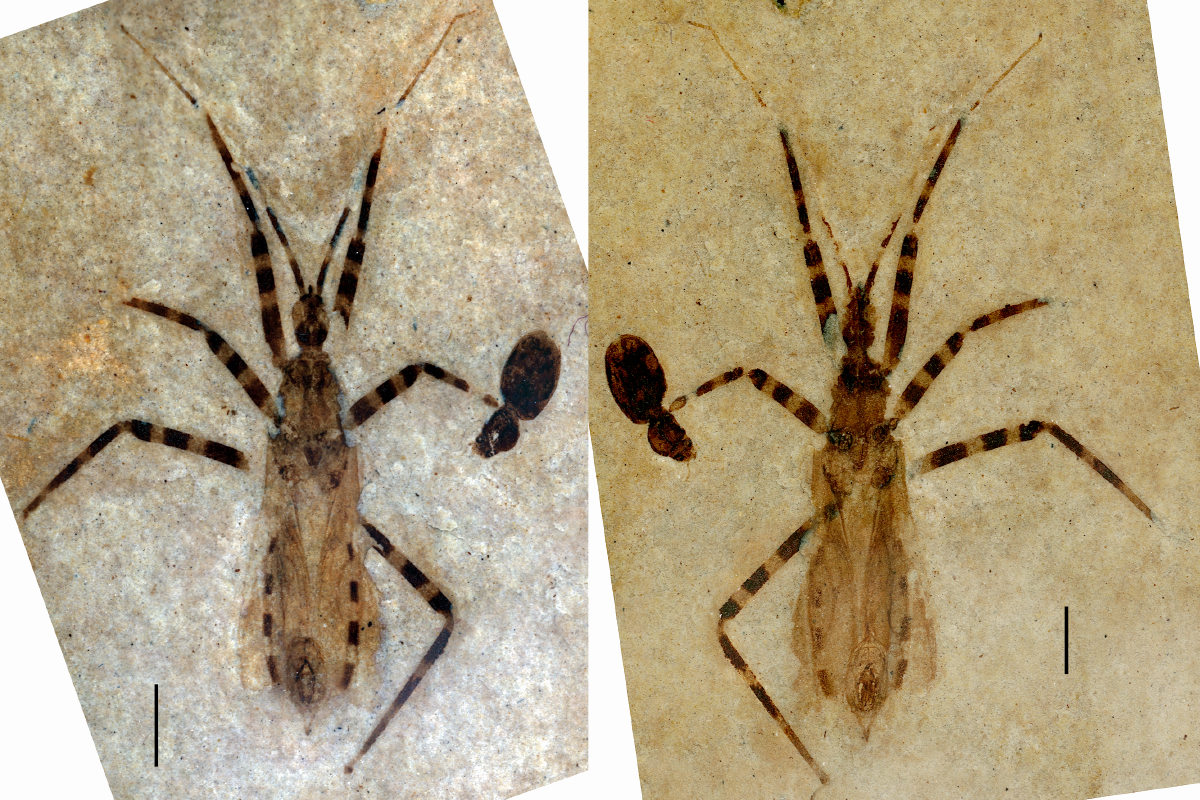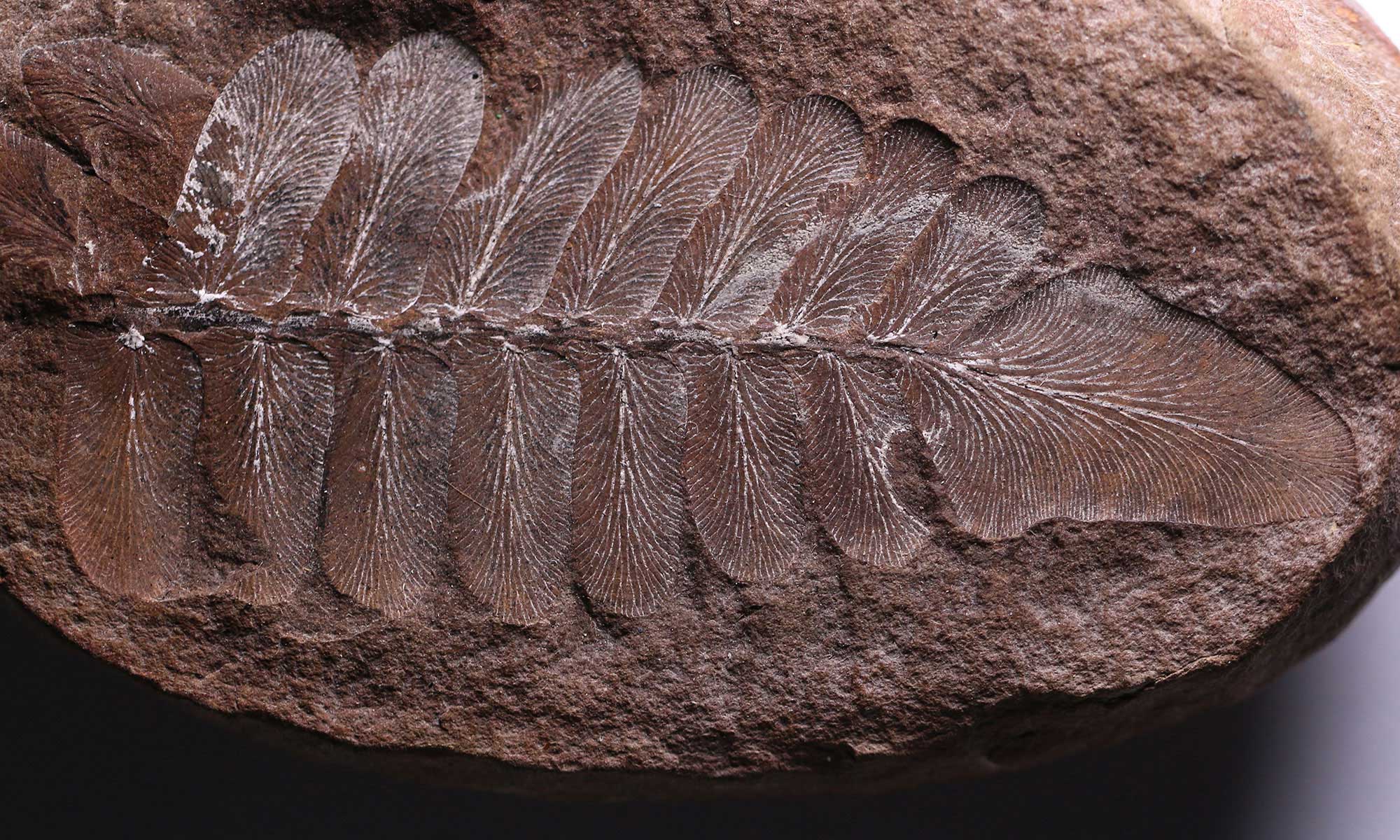
The fossilized insect is tiny and its genital capsule, called a pygophore, is roughly the length of a grain of rice. It is remarkable, scientists say, because the bug’s physical characteristics – from the bold banding pattern on its legs to the internal features of its genitalia – are clearly visible and well-preserved. Recovered from the Green River Formation in present-day Colorado, the fossil represents a new genus and species of predatory insects known as assassin bugs.
The find is reported in the journal Papers in Palaeontology.
Discovered in 2006 by breaking open a slab of rock, the fossilized bug split almost perfectly from head to abdomen. The fracture also cracked the pygophore in two. A fossil dealer later sold each half to a different collector, and the researchers tracked them down and reunited them for this study.
“Being able to see a bug’s genitalia is very helpful when trying to determine a fossil insect’s place in its family tree,” said Sam Heads, a paleontologist at the Illinois Natural History Survey who led the research with Daniel Swanson, a graduate student in entomology at the University of Illinois Urbana-Champaign.

